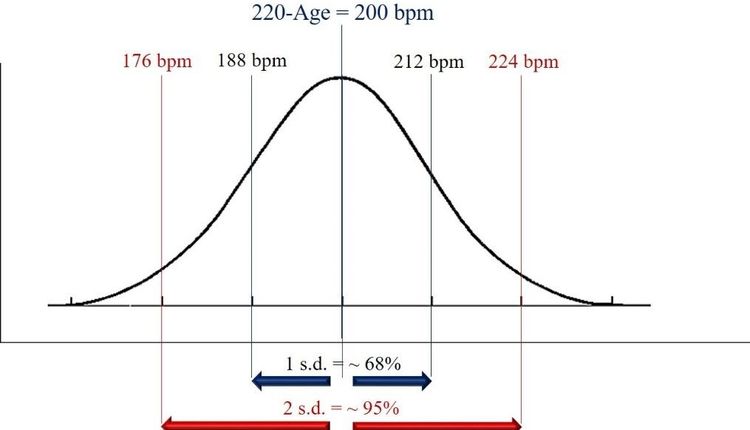The bottom isn't just dropping out of the stock market. It's also giving way in a critical measure of heart risk.
Two new studies indicate that the threshold of what doctors consider "normal" levels of bad cholesterol, or LDL, may be too high, leaving thousands of people vulnerable to heart attacks and strokes.
One of the studies, led by Gregg Fonarow of UCLA, examined 131,000 hospital admissions for heart disease and found that at least half of the patients had normal LDL levels. The other study, called JUPITER, involved 18,000 people. It showed that giving a cholesterol-lowering statin to older people with normal LDL cut their risk of heart attack and stroke in half.
Taken together, doctors say, the studies suggest that accepted notions of normal LDL are wrong — and that current treatment guidelines miss at least half of those who should be getting a statin.
Millions Untreated
JUPITER suggests that millions more older people — as many as 11 million, Yale researcher Erica Spatz reported this month — should be getting statins. That would bring the total to about 45 million people, or 80% of all men older than 50 and all women older than 60.
But UCLA's Fonarow, whose study was published in the American Heart Journal, says there's another possibility. "There are two potential implications," he says. "Either the threshold of what was set as an ideal LDL was set outrageously high, thus allowing the vast majority of patients to be missed, or LDL isn't much of a risk factor. It's got to be one of the two."
Current guidelines recommend that doctors prescribe a statin for anyone whose LDL is 100 milligrams per deciliter of blood or higher. Doctors may treat patients with lower LDL at their discretion. But Fonarow notes that "half of all heart attacks are occurring below 100 (mg/dl)."
Sidney Smith of the University of North Carolina-Chapel Hill, an authority on treatment guidelines and one of Fonarow's co-authors, says the study supports the wisdom of a push to drive LDL even lower, in many cases down to 70 mg/dl.
JUPITER offers a crucial clue to another potent risk factor, inflammation, that is gaining wider recognition. That's because the study was designed to find out whether statins can prevent heart attacks and strokes in people who have normal cholesterol but whose arteries show signs of being inflamed. The findings offer strong evidence that statins relieve inflammation.
If LDL is cardiovascular dynamite, inflammation is the fuse. Here's why: LDL carries cholesterol into the bloodstream, where it collects in artery walls. Inflammatory cells sometimes attack these deposits, causing them to burst. When that happens, blood clots and other debris float downstream into the arteries that nourish the heart. A blockage in a critical vessel may cut off the heart's blood supply.
"If we understand the biology of this disease, there are two fundamental components: cholesterol and inflammation," says Paul Ridker of Brigham and Women's Hospital in Boston and JUPITER's lead author. "When we make that leap, so many other things become simple."
Making the leap has been anything but simple. Some critics have challenged Ridker's emphasis on inflammation and the validity of the test he helped to develop. Ridker has disclosed that he holds patents on the test, which measures C-reactive protein (CRP), a signal of artery inflammation.
The accepted view of heart risk stems from the Framingham study, a long-term government-funded evaluation of the residents of a Massachusetts community dating to 1948.
Constellation of Risks
The Framingham study identified age, gender, smoking, blood pressure, diabetes, blood fats and family history as key risk factors that can be used to calculate a person's odds of having a heart attack or stroke in the next 10 years.
"LDL is one of a constellation of risk factors," says Framingham's director Daniel Levy, adding that the new research is bringing into clearer focus the many factors that influence heart risk and how best to lower it. "This is a jigsaw puzzle," he says. "Even before the last piece is in place, we have a good idea of what we're looking at."
The question, he says, is deciding whom to treat. "In theory, ultra-aggressive treatment might reduce (heart attack and stroke) rates in the general population," Levy says, "but the reality is we can't target everyone for that kind of therapy."
Ridker asserts that testing for inflammation simplifies the picture. It appeared, in JUPITER, to trump such accepted traits as obesity as a predictor of heart-attack risk.
"If you were a thin person with high CRP or an obese person with high CRP, the risk was identical," he says. "Inflammation was the common driver."
News release provided by USA Today. Visit USAtoday.com for more headlines.
Two new studies indicate that the threshold of what doctors consider "normal" levels of bad cholesterol, or LDL, may be too high, leaving thousands of people vulnerable to heart attacks and strokes.
One of the studies, led by Gregg Fonarow of UCLA, examined 131,000 hospital admissions for heart disease and found that at least half of the patients had normal LDL levels. The other study, called JUPITER, involved 18,000 people. It showed that giving a cholesterol-lowering statin to older people with normal LDL cut their risk of heart attack and stroke in half.
Taken together, doctors say, the studies suggest that accepted notions of normal LDL are wrong — and that current treatment guidelines miss at least half of those who should be getting a statin.
Millions Untreated
JUPITER suggests that millions more older people — as many as 11 million, Yale researcher Erica Spatz reported this month — should be getting statins. That would bring the total to about 45 million people, or 80% of all men older than 50 and all women older than 60.
But UCLA's Fonarow, whose study was published in the American Heart Journal, says there's another possibility. "There are two potential implications," he says. "Either the threshold of what was set as an ideal LDL was set outrageously high, thus allowing the vast majority of patients to be missed, or LDL isn't much of a risk factor. It's got to be one of the two."
Current guidelines recommend that doctors prescribe a statin for anyone whose LDL is 100 milligrams per deciliter of blood or higher. Doctors may treat patients with lower LDL at their discretion. But Fonarow notes that "half of all heart attacks are occurring below 100 (mg/dl)."
Sidney Smith of the University of North Carolina-Chapel Hill, an authority on treatment guidelines and one of Fonarow's co-authors, says the study supports the wisdom of a push to drive LDL even lower, in many cases down to 70 mg/dl.
JUPITER offers a crucial clue to another potent risk factor, inflammation, that is gaining wider recognition. That's because the study was designed to find out whether statins can prevent heart attacks and strokes in people who have normal cholesterol but whose arteries show signs of being inflamed. The findings offer strong evidence that statins relieve inflammation.
If LDL is cardiovascular dynamite, inflammation is the fuse. Here's why: LDL carries cholesterol into the bloodstream, where it collects in artery walls. Inflammatory cells sometimes attack these deposits, causing them to burst. When that happens, blood clots and other debris float downstream into the arteries that nourish the heart. A blockage in a critical vessel may cut off the heart's blood supply.
"If we understand the biology of this disease, there are two fundamental components: cholesterol and inflammation," says Paul Ridker of Brigham and Women's Hospital in Boston and JUPITER's lead author. "When we make that leap, so many other things become simple."
Making the leap has been anything but simple. Some critics have challenged Ridker's emphasis on inflammation and the validity of the test he helped to develop. Ridker has disclosed that he holds patents on the test, which measures C-reactive protein (CRP), a signal of artery inflammation.
The accepted view of heart risk stems from the Framingham study, a long-term government-funded evaluation of the residents of a Massachusetts community dating to 1948.
Constellation of Risks
The Framingham study identified age, gender, smoking, blood pressure, diabetes, blood fats and family history as key risk factors that can be used to calculate a person's odds of having a heart attack or stroke in the next 10 years.
"LDL is one of a constellation of risk factors," says Framingham's director Daniel Levy, adding that the new research is bringing into clearer focus the many factors that influence heart risk and how best to lower it. "This is a jigsaw puzzle," he says. "Even before the last piece is in place, we have a good idea of what we're looking at."
The question, he says, is deciding whom to treat. "In theory, ultra-aggressive treatment might reduce (heart attack and stroke) rates in the general population," Levy says, "but the reality is we can't target everyone for that kind of therapy."
Ridker asserts that testing for inflammation simplifies the picture. It appeared, in JUPITER, to trump such accepted traits as obesity as a predictor of heart-attack risk.
"If you were a thin person with high CRP or an obese person with high CRP, the risk was identical," he says. "Inflammation was the common driver."
News release provided by USA Today. Visit USAtoday.com for more headlines.







